Best Overall
Synthetic
Oboe Reeds
Pro Oboe Reed Perfect For: Any Oboe Players
-
Overall: 10/10
-
Best Feature: Synthetic reed made from eco-friendly Ambipolymer
-
TedScore™: 10/10
Best
Beginner
Synthetic
Oboe Reeds
Alto Saxophone
Synthetic Reed Perfect For Beginners
-
Overall: 9/10
-
Best Feature:
Easy to play -
TedScore™: 9/10
Best Intermediate Synthetic
Oboe Reeds
-
Overall: 9/10
-
Best Feature: Ready to play right out of the box.
-
TedScore™: 9/10
Picture yourself in the spotlight, ready to play the oboe as the orchestra goes quiet—what could be more exciting?
As an oboe player, I can tell you there’s nothing quite like the first breath that brings music to life, and synthetic oboe reeds are at the heart of this magical moment.
They’re the quiet champions that have changed the woodwind world with their reliability and strength.
No more struggling to adjust cane reeds; synthetic reeds are good to go as soon as you get them, which is great news for musicians at any skill level.
Keep reading, and I’ll explain why switching to synthetic oboe reeds could be the best decision you’ll ever make.
We’ll explore the rich, lively sounds and the convenience of using reeds that don’t need constant care. You will want to take advantage of this!
Selecting the Right Reed
Choosing the perfect synthetic oboe reed is like finding a soulmate for your oboe. It’s all about the harmony between your playing style and the reed’s characteristics.
Strength Chart and Sizing
I’ve found that strength charts are indispensable guides for oboists. They help you match the reed’s strength with your personal preference and playing style. A well-suited reed should feel just right—not too soft that it lacks clarity, nor too hard that it requires Herculean effort to play.
For ease of choice, here’s a basic strength chart:
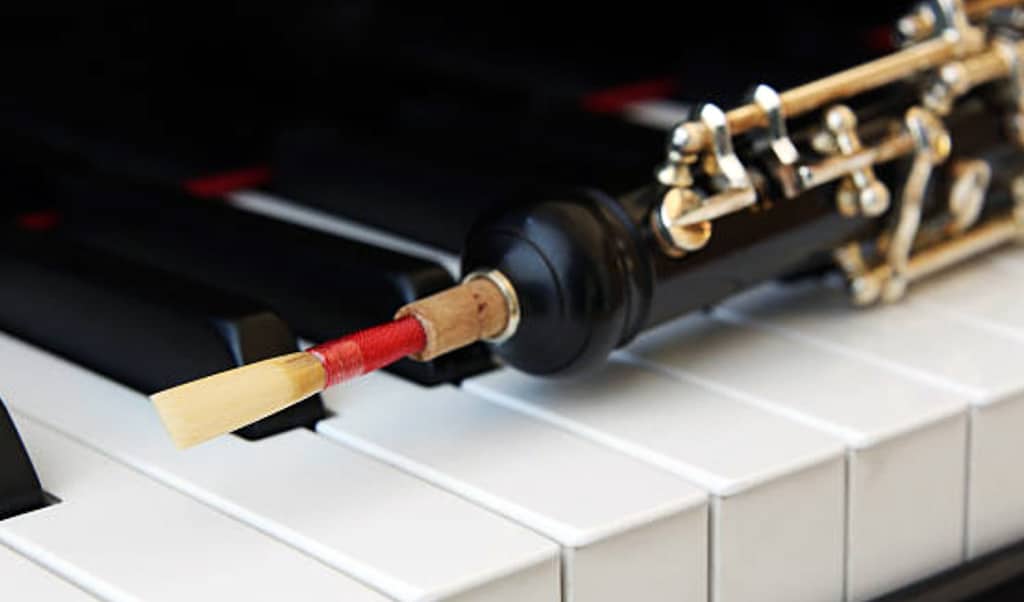
Ideal for players who value ease of articulation
A balance between responsiveness and resistance.
The go-to option for many, striking a happy medium across the board.
Suited for those desiring more resistance and assertive sound projection.
Remember, the sizing is not uniform across makers, so always check their specific charts!
Considerations for Beginners and Professionals
For beginners, I always suggest starting with a medium-strength reed. It’s trainable, forgiving, and responsive enough to help you grasp the basics of articulation and tone production. Besides, you don’t want to tire yourself out too soon – you’ve got music to make!
Professionals, on the other hand, might be a tad pickier. Their choice reflects years of crafting their sound, and they often know exactly what they need regarding responsiveness and articulation.

A synthetic reed that can deliver consistent performance across varied conditions is undoubtedly the cherry on top for a seasoned player.
Materials and Manufacture
When I think of synthetic oboe reeds, I imagine the fusion of art and science. Let’s explore the actual building blocks and how these clever little components are crafted.
Synthetic Polymer Composition
Did you know that Silverstein Works crafted a special polymer for their AMBIPOLY reeds?
This material is truly something out of a sci-fi novel.
It’s designed to cleverly absorb water, remember its shape, and isn’t fussed by the climate changes that can so ruin my day.

Silverstein Works Ambipoly Pro Oboe Reed

FEATURES:
- Synthetic reed made from
eco-friendly Ambipolymer
-Innovative design mimics
the traditional wooden reed
but with greater resistance.
- Retains moisture for 5 hours after just 30 seconds in water.
- None
When you click ‘Check Price’, you’ll see there are loads of great places to buy this item. Our personal favorite is Sweetwater for the US, and Thomann and Gear4Music for the UK & Europe.
They are the largest music retailers, with excellent customer service, competitive prices, really fast shipping, and the longest guarantees.
The professional musician who wrote this article combined many things,
from the product build, manufacturer’s reputation through to feedback
from other users, to create our famous TedScore™.
Oboe Reeds Top Pick
Bari Elite Alto Saxophone Synthetic Reed
- Responsive and resonant reed
- Individuals may need to align with their playing style and sound preferences fully.
When you click ‘Check Price’, you’ll see there are loads of great places to buy this item. Our personal favorite is Sweetwater for the US, and Thomann and Gear4Music for the UK & Europe.
They are the largest music retailers, with excellent customer service, competitive prices, really fast shipping, and the longest guarantees.
The professional musician who wrote this article combined many things,
from the product build, manufacturer’s reputation through to feedback
from other users, to create our famous TedScore™.
Legere LGOB-MH European Scrape Oboe Reed
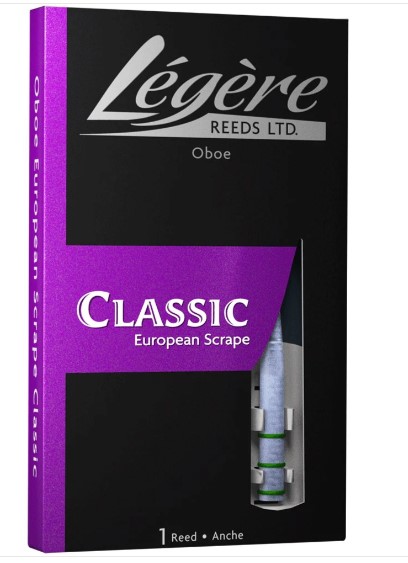
FEATURES:
Synthetic oboe reed delivers a
wonderful tone and response.
-Ready to play right out of the box.
- It never needs to be moistened and is unaffected by humidity or weather.
- They are priced higher compared to traditional cane reeds.
When you click ‘Check Price’, you’ll see there are loads of great places to buy this item. Our personal favorite is Sweetwater for the US, and Thomann and Gear4Music for the UK & Europe.
They are the largest music retailers, with excellent customer service, competitive prices, really fast shipping, and the longest guarantees.
The professional musician who wrote this article combined many things,
from the product build, manufacturer’s reputation through to feedback
from other users, to create our famous TedScore™.
Production Techniques
The production of these reeds is quite the contemporary ballet. Machines and hands work in unison to carve and shape synthetic materials into something my oboe loves.
The techniques used focus on precision; we’re after consistency, reliability, and that beautiful oboe sound. It’s not just reed-making; it’s more akin to crafting a tiny instrument in its own right.
Design and Scrape
I’ve encountered several types of synthetic reeds, each with a unique design and scrape. Knowing that these variances directly influence your oboe’s tone and response is crucial in shaping your playing experience.
American versus European Scrape
The American scrape reed has a longer scrape.
This design typically has a distinct “V” shape thinned down towards the back of the reed.
The European scrape, which I’ve found quite warm and responsive,
Is characterized by a shorter and broader scraping pattern.
It looks like a heart shape at the opening, which lends a different quality to the sound produced.
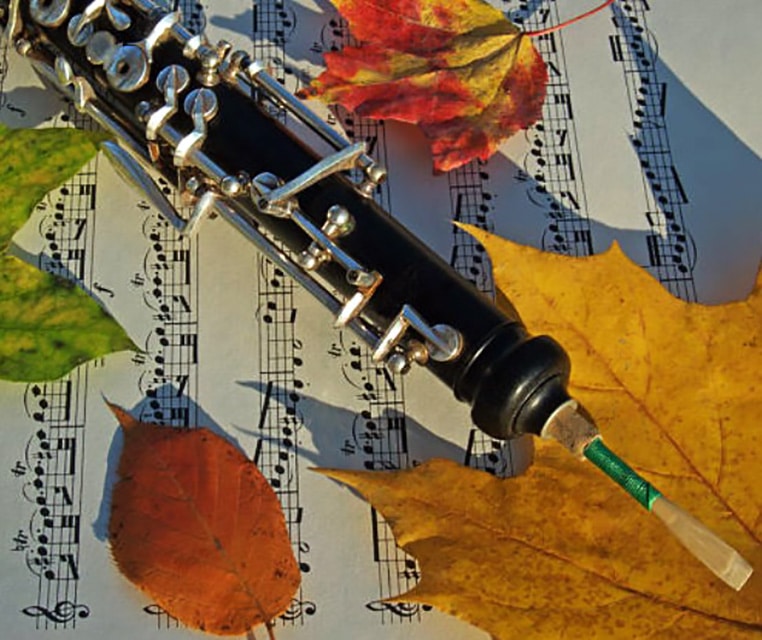
Impact on Tone and Response
With an American scrape, you’ll generally get a bright,
Focused tone that cuts through ensembles like a warm knife through butter.
My reeds provide that clear articulation and secure intonation,
Ensuring my performances are just as stable at any altitude.
However, the European scrape oboe reed’s design allows for a darker, more centered sound,
and I’ve noticed it’s wonderfully consistent straight out of the box.
Its ease of projection has saved me during many a live performance, where instant response is as good as gold.
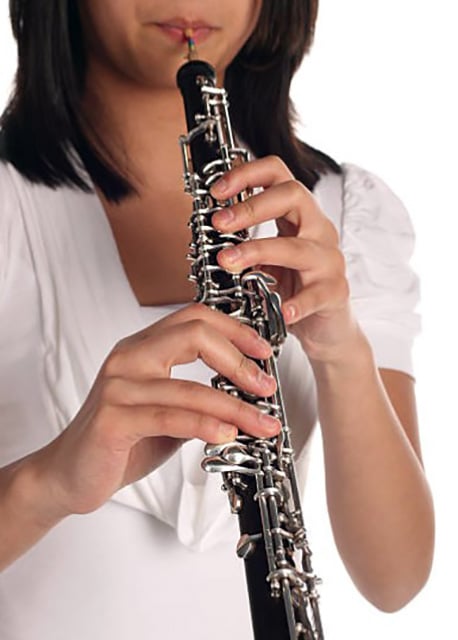
Physical Characteristics
Let me take you on a quick tour of the physical attributes of synthetic oboe reeds. They’re quite the revolution in terms of durability and consistency!
Reed Dimensions
The length of the reed matters immensely, and with synthetic oboe reeds, precision is key. I’ve noticed that they are the same length as traditional cane reeds. The total length usually stands around 70mm, give or take a smidge, depending on the make. It’s this precise measurement that ensures each note flutters out beautifully every single time.
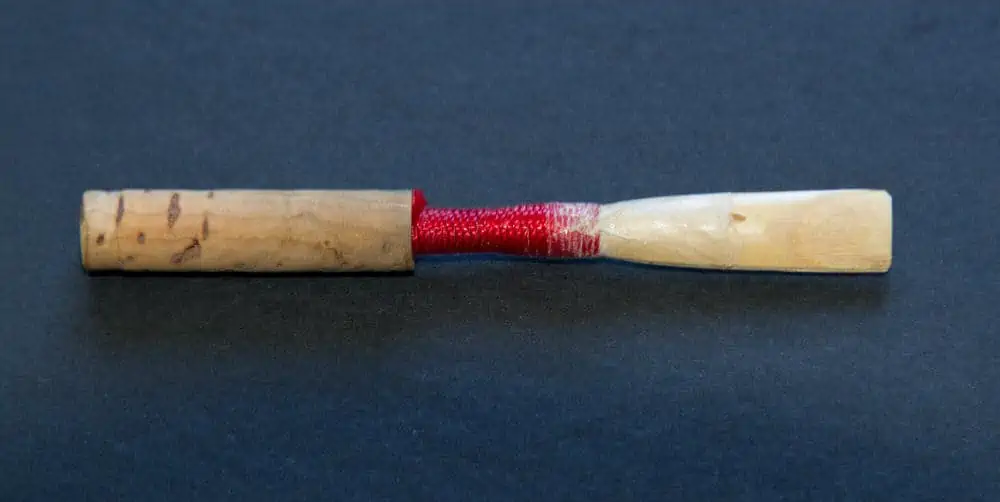
Staple and Tip Features
Now, onto the staple – the cylindrical metal part at the bottom.
My experience tells me it’s not just a metal tube; it’s a vital piece contributing to the reed’s overall stability and tone production.
It usually extends about 47mm long, although some reeds are designed with a staple that goes up a millimeter further, keeping the total length unchanged.
As for the tip, that’s where the reed sings.
It’s crafted to mimic the vibrancy and flexibility of traditional cane—without the fuss.
I’ve always admired how the tip of a synthetic reed needs no pre-play pampering;
It’s eternally poised to perform right out of the box!
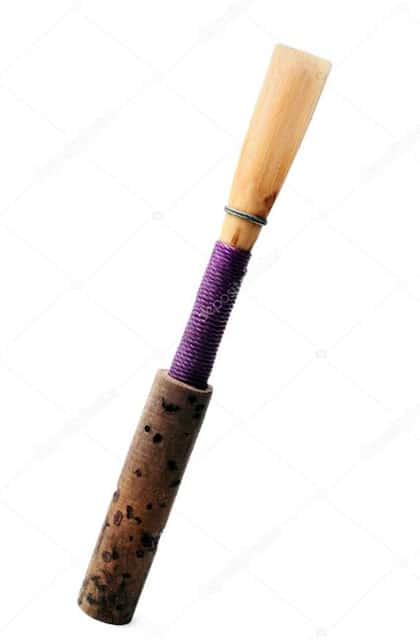
Performance and Playability
Synthetic oboe reeds have made great strides in responding swiftly and allowing you to articulate with finesse. Let me give you the scoop on how they fare in the grand orchestral setting!
Response and Articulation
When I first tried a synthetic reed, the immediate response caught my ear.
Sound onset is crisp, allowing me to articulate notes clearly and swiftly.
I’ve noticed synthetic reeds ease the transition between the notes, making my legato as smooth as butter on scones.
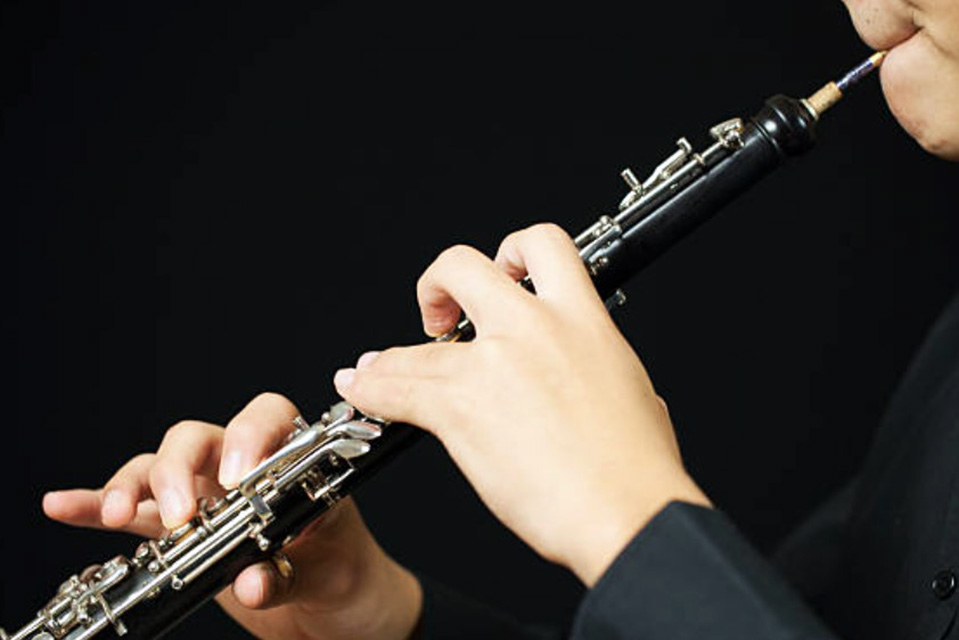
Consistency Across Climatic Conditions
I must highlight that synthetic reeds offer remarkable consistency despite the weather’s tantrums. Be it the oppressive humidity of a rainy day or the nose-tingling dryness of an alpine climate, my synthetic reed hardly bats an eyelid.
Comparison with Cane Reeds
When I think about synthetic reeds for the oboe, I always compare them to traditional cane reeds. It’s like comparing an e-reader with a classic paperback—both have their merits in the music world.
Tonal Differences
I’ve noticed that synthetic reeds, including the famed Légère, offer remarkable consistency in tone.
But nothing quite matches the organic warmth that a natural cane reed brings.
Ambipoly reeds are interesting contenders, standing out with a sound that aims to bridge the gap between synthetic and cane,
Often blending the clarity of synthetics with a bit more of that desirable cane-like complexity.
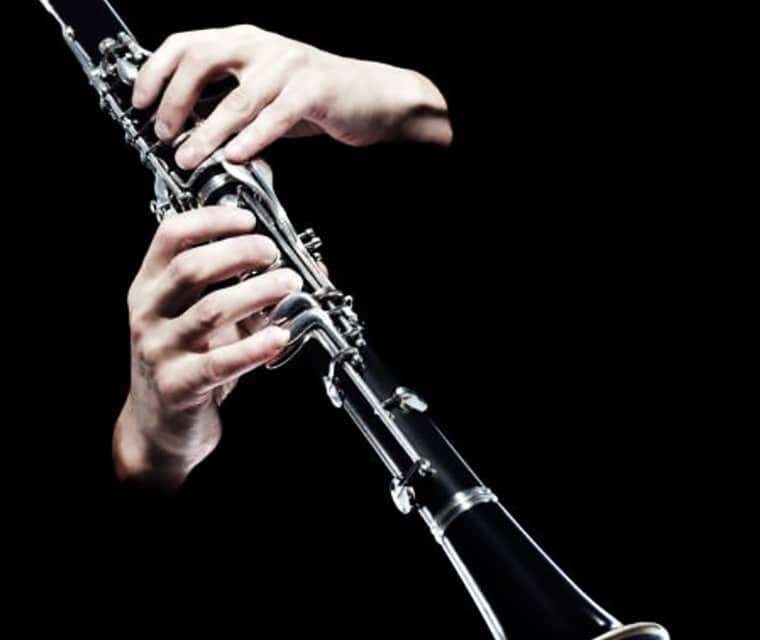
Durability and Longevity
I am intrigued by how synthetic reeds shrug off the weather’s antics. They are like the steadfast postman; neither rain nor heat nor gloom of night keeps them from holding their tune.
With cane reeds, it’s a different story every day; humidity and temperature love to play tricks on them. And when it comes to sticking around, synthetic reeds are the tortoises in the race—longevity is their middle name.
At the same time, my cane reeds seem to feel more like mayflies, showing off their best but only for a fleeting while.
Care and Maintenance
Caring for synthetic oboe reeds is much like caring for a cherished pet; it requires attention to detail and a gentle touch. Dedicate a moment to ensuring their longevity, and they’ll sing for you time and time again.
Storage and Handling
I’m vigilant about storing my synthetic oboe reeds – challenging but not indestructible.
A sturdy reed case, preferably with a secure clasp, is my best defense against accidental squashes and moisture build-up.
When handling the reeds, I remind myself to be as gentle as holding a butterfly.
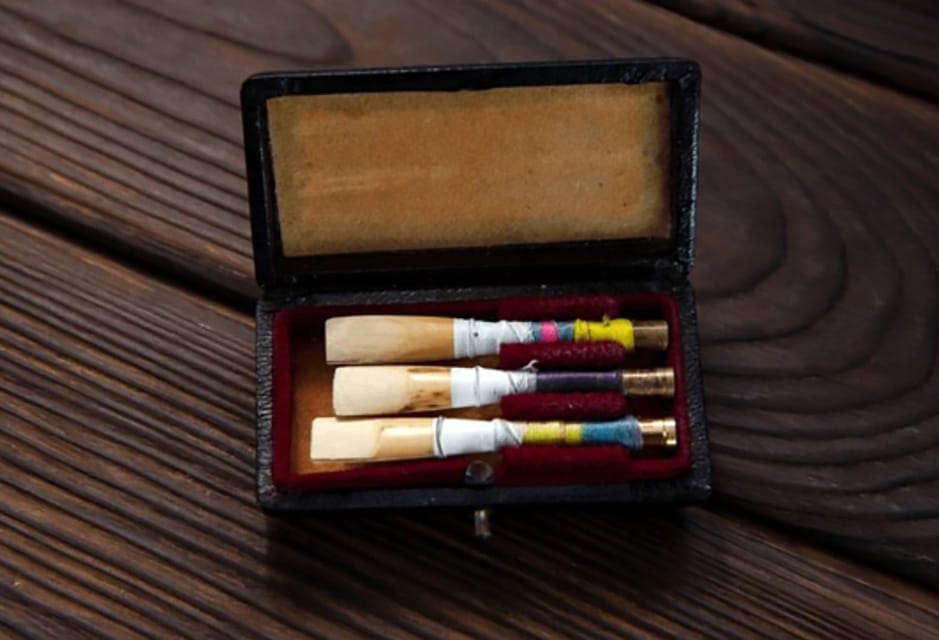
The tip, especially, deserves delicate care to avoid any heartbreaking splits or cracks.
I reserve the original vials for transport, certainly not for long-term housing – they don’t like feeling stuffy, much like you and me.
Cleaning and Adjustments
I keep my synthetic reeds spick and span with an occasional date with my trusty OmniClean manual method.
It’s a spa treatment that clears any accumulated gunk with a soft-bristled brush and room-temperature water.
Should my reed require a slight tweak, I approach adjustments with the finesse of a jeweler.
Minor scrapes and gentle adjustments can revive a weary reed,
But I always remember that less is more.

Synthetic Oboe Reed
Finale
Brimming with reliability and consistency, synthetic reeds wave goodbye to the fickleness of their cane cousins, especially when you’re grappling with the whims of humidity and temperature.
My fingers savored the touch of the Ambipoly Silverstein reed, and though it sang with a brightness that tickled my fancy less than some might like, its energy was undeniable. It’s thrilling to see synthetic reeds like the Legere charming the oboe community; their making and performance are certainly something to behold.
A reed that lets you focus more on the music and less on the medium? Now that’s music to my ears! Thanks to advancements in synthetic reed technology, players across the board—from curious beginners to seasoned virtuosos—have something to gain.
Durability is the game’s name, and though I’ll always have a soft spot for traditional reeds, the synthetic wave is riding high.
These tough little numbers have carved out their niche and are here to stay, maintaining their poise through rehearsals, lessons, and performances.
Imagine that – a reed not thrown by a change in the weather! A trustworthy little blighter ready to play when you are, ensuring you can express yourself with every note.
That’s the beauty of synthetic oboe reeds, and it’s a tune I’m happy to keep playing.
Hold on! There’s more…
Discover the best oboe brands and find the best option for your musical needs in this comprehensive article.
FAQ's
Synthetic oboe reeds can be worth it for many players due to their durability, consistency, and lower maintenance requirements than traditional cane reeds.
The lifespan of synthetic reeds can vary depending on factors such as playing frequency, maintenance, and the specific brand and model of the reed. Generally, synthetic reeds have a longer lifespan than traditional cane reeds and can last several months to a year or more with proper care.
A few reasons why an oboe reed might be hard to play include issues with its balance, resistance, or shape. Additionally, environmental factors such as temperature and humidity can affect the reed’s playability.
Yes, many professional oboists make their reeds, allowing them to customize them to their specific playing styles and preferences. This level of customization can significantly impact the sound and playability of the reed, catering to the unique needs of the individual musician.



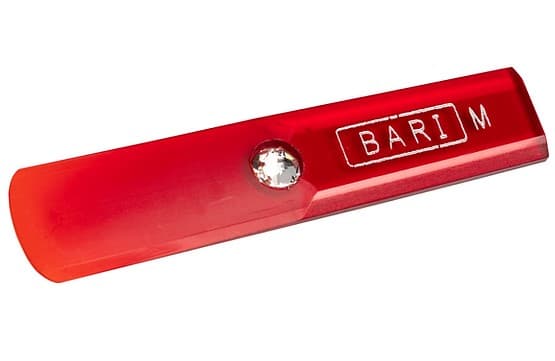








do oboe reeds work on saxophones? asking for a friend lol
thanks for the breakdown on american vs european scrape, really helped me understand the difference. planning to experiment a bit to find what suits me best!
not convinced about the tonal quality of synthetic reeds compared to cane. yeah, cane’s a pain to maintain, but ain’t nothing beats its sound. Guess it boils down to what you value more – convenience or quality?
still, can’t beat the classic feel of cane in my book. nothing does.
i get where you’re coming from but honestly, synthetics are catching up fast in terms of quality.
heard synthetic reeds might be easier for beginners like me to start with than cane. any truth to that, Katie Bennington? seems easier to manage.